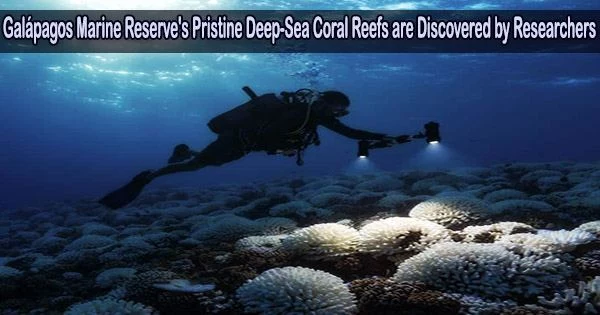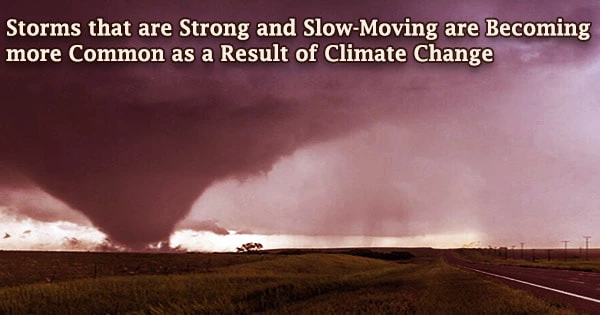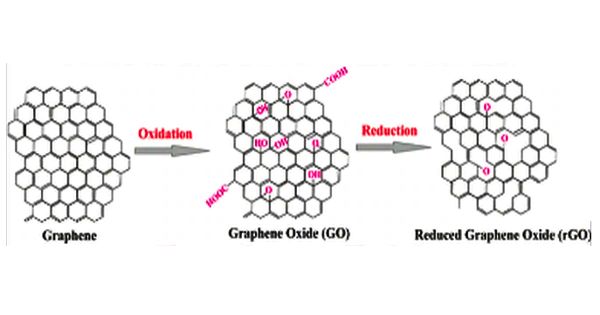The Galápagos Marine Reserve (GMR) is the first marine protected area (MPA) of its sort to contain large, ancient deep-sea coral reefs discovered by scientists since the MPA’s establishment in 1998.
The top of a previously uncharted seamount in the middle of the archipelago is where the first reef was discovered. It is 400-600m (1,310-1,970 feet) deep and is home to an incredible variety of deep marine life.
Cresting the ridge of a submerged volcano, and stretching over several kilometers, the impressive reef structure was first recorded by Dr. Michelle Taylor (University of Essex, UK) and Dr. Stuart Banks (Charles Darwin Foundation, Ecuador) while diving in the deep-sea research submersible Alvin, operated by the Woods Hole Oceanographic Institution (WHOI, USA).This is the first time
HOV Alvin has explored this region within the GMR. Recent improvements to the submersible’s imaging systems, including upgraded high-quality still and ultra-high resolution 4K video ones, as well as improved sample capacities, were completed.
On the US Navy-owned and WHOI-operated research vessel R/V Atlantis, which is engaged in the Galápagos Deep 2023 project, Taylor and Banks are among a global team of scientists.
Scientists at WHOI, University of Bristol (UK), Boise State University (USA), and University of Essex, in collaboration with the Galápagos National Park Directorate (GNPD), Charles Darwin Foundation and Ecuadorian Navy’s Oceanographic and Antarctic Institute (INOCAR), lead the expedition. The US National Science Foundation (NSF) and Natural Environmental Research Council (NERC) in the UK fund the expedition.
Exploring, mapping and sampling the Galápagos Platform with Alvin and Atlantis represents an opportunity to apply 21st-century deep-submergence and seafloor mapping technologies and innovative deep-sea imaging techniques to reveal the beauty and complexity of the volcanic and biological processes that makes the Galápagos so unique.
Dr. Daniel J. Fornari
Commenting on this groundbreaking discovery, the Minister of Environment of Ecuador, Jose Antonio Dávalos said: “This is encouraging news. It reaffirms our determination to establish new marine protected areas in Ecuador and to continue promoting the creation of a regional marine protected area in the Eastern Tropical Pacific. The richness of the yet explored depths of our ocean is another reason to strive towards achieving the commitments of the Global Ocean Alliance 30×30, which aims to protect at least 30% of the world’s oceans by 2030, aligning sustainable economic activities with conservation.”
One of the few structural shallow coral reefs in the Galápagos Islands believed to have survived the 1982–1983 El Niño event was Wellington Reef, which is located off the shore of Darwin Island in the far north of the archipelago.
The recent finding by scientists during dives in the HOV Alvin indicates that protected deep-water coral reefs have probably lasted for ages at the GMR’s depths, supporting rich, diversified, and possibly unique marine communities.
Dr. Stuart Banks, Senior Marine Researcher at the Charles Darwin Foundation, and national observer on this expedition adds: “The captivating thing about these reefs is that they are very old and essentially pristine, unlike those found in many other parts of the world’s oceans. This gives us reference points to understand their importance for marine natural biodiversity heritage, connectivity with regional MPAs, as well as their role in providing goods and services such as carbon cycling and fisheries. It also helps us reconstruct past ocean environments to understand modern climate change. Open waters cover over 95% of the known GMR, of which less than 5% have been explored through modern research expeditions. It’s very likely there are more reef structures across different depths waiting to be explored. We’ll forge ahead with the Galapagos National Park Directorate and partners to help ensure that such newly discovered habitats are folded into the GMR and Hermandad Marine Reserve planning process and recognized as part of their considerable world heritage value.”
Dr. Michelle Taylor, co-lead of the expedition and Chair of the Deep Sea Society from the University of Essex notes the importance of this discovery for deep sea habitats: “The discovered reefs are novel for several reasons in shallow reefs where finding 10-20% of coral cover would be considered a relatively unhealthy reef, in the deep-sea this is the norm. Dead coral skeletons making up the remaining 80-90% still provide homes for a huge diversity of life, which is less reliant on the live sections of coral.”
“However, the reefs we’ve found in the last few days have 50-60% live coral in many areas, which is very rare indeed. They are pristine and teeming with life pink octopus, batfish, squat lobsters and an array of deep-sea fish, sharks, and rays. These newly discovered reefs are potentially of global significance a canary in the mine for other reefs globally sites which we can monitor over time to see how pristine habitats evolve with our current climate crisis.”
Dr. Daniel J. Fornari, co-lead of the expedition, marine geologist, and Emeritus Research Scholar at the Woods Hole Oceanographic Institution who has mapped and sampled the marine environment in the Galápagos for over 20 years notes:
“Exploring, mapping and sampling the Galápagos Platform with Alvin and Atlantis represents an opportunity to apply 21st-century deep-submergence and seafloor mapping technologies and innovative deep-sea imaging techniques to reveal the beauty and complexity of the volcanic and biological processes that makes the Galápagos so unique.”
This and other scientific discoveries are useful for informing management and conservation decisions. The discovery also occurs at a time when Ecuador, Costa Rica, Panama, and Colombia are actively working collaboratively through the regional Marine Corridor (CMAR) project to protect and responsibly manage the ocean, which is essential to human life.
Newly declared MPAs such as the Hermandad Marine Reserve (HMR) now connect seamounts in Ecuadorian waters to offshore marine environments such as Costa Rica’s Cocos Island National Park.
Natural oceanographic and marine processes cross international borders, which emphasizes the need for special efforts to protect marine life’s migratory paths, foraging grounds, and fisheries that are conducted responsibly.
















